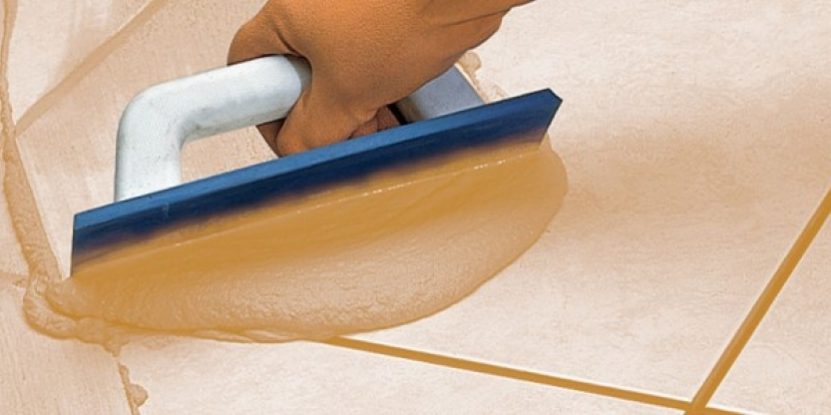FLOOR TILE GROUTING – CONTROLLING COLOUR SHADE VARIATION
MIX CONSISTENCY:
It is essential to ensure the powder is mixed thoroughly and consistently in a clean vessel, with clean water, to form a smooth, homogenous and lump-free paste. It is very important to use the correct amount of water as recommended by the grout manufacturer. Consecutive mixes of the ready to apply grout must be produced from the same batch of powder, using an identical water addition, whilst again achieving a fully consistent, smooth lump-free paste and never add more water than the recommended addition level.
JOINT PREPARATION:
All joints to be grouted must be of consistent depth and raked clean of any adhesive residues as any contaminant in the open joints will consequently result in irregularities in the depth & consistency of the freshly applied grout, both of which may result in shade variation.
TILED SURFACE CLEANING & JOINT FINISHING:
Immediately after grouting when wiping down to remove the excess from the tile face around the joints, care must be taken not to over-wet the freshly compacted joints, as this may affect water content in some joints but not in others raising the possibility of a lighter shaded appearance in these areas. Brushing or dry-wiping over a grouted floor joint when the paste has dried and bodied up, but is still not set can disturb the surface finish and open up the texture of the grout to give a coarser and darker shade than when the grout was first laid and finished off with a wet cloth or sponge. Any contact with the surface at this point in time must be even and consistent over all areas to ensure the hardened appearance retains an equal texture, otherwise shade variations are inevitable.
GENERAL SURFACE MAINTENANCE:
Cleaning and maintenance of the completed tiled surface must ensure that the materials and cleaning agents used are applied consistently, are not used at excessive concentrations and are rinsed off promptly as soap and detergent residues can accumulate in joints and affect appearance, particularly when exposed to moisture.
SUBSTRATE TYPE:
Variations in the density or porosity of the surface beneath the tiles will encourage some areas of the grout joints to dry out at a different rate to others, usually illustrated where darker areas of the grout are laid over dense or impermeable section of flooring, whereas lighter shades will be evident over the more porous and drier sections of the substrate flooring.
SERVICE CONDITIONS:
The end use of the tiled location needs some consideration as this may result in some areas being exposed to wetting more frequently than others, which consequently will result in the damper sections appearing slightly darker than the drier areas. Regular and localised wetting of one area at a more frequent rate than the surrounding tiled area will result in a shade variation due to the moisture level retained within the cured tile joint.
TILE TYPE & FINISH:
Porous tiles, substrates or joints adjoining the cut edge of a tile will be exposed to greater risk of moisture absorption from the wet paste than less porous surfaces or true tile edges. This can produce localised variations in moisture content and when fully cured will manifest in a shade variation from joint to joint.
To maintain an ideal consistent appearance in all grout joints it is essential to ensure consistency is applied at all stages of the application process, including the type of tooling used to finish off joints, the amount of moisture introduced when cleaning the tiled surface and the time which elapses between initially compacting the joints and then returning to tool the joints to a smooth clean edged finish.
Failure to adhere to any one of the above precautions is likely to result in shade variation in the final colour of the hardened grout, which may only then be resolved with the application of a mildly acidic surface cleaning agent.








